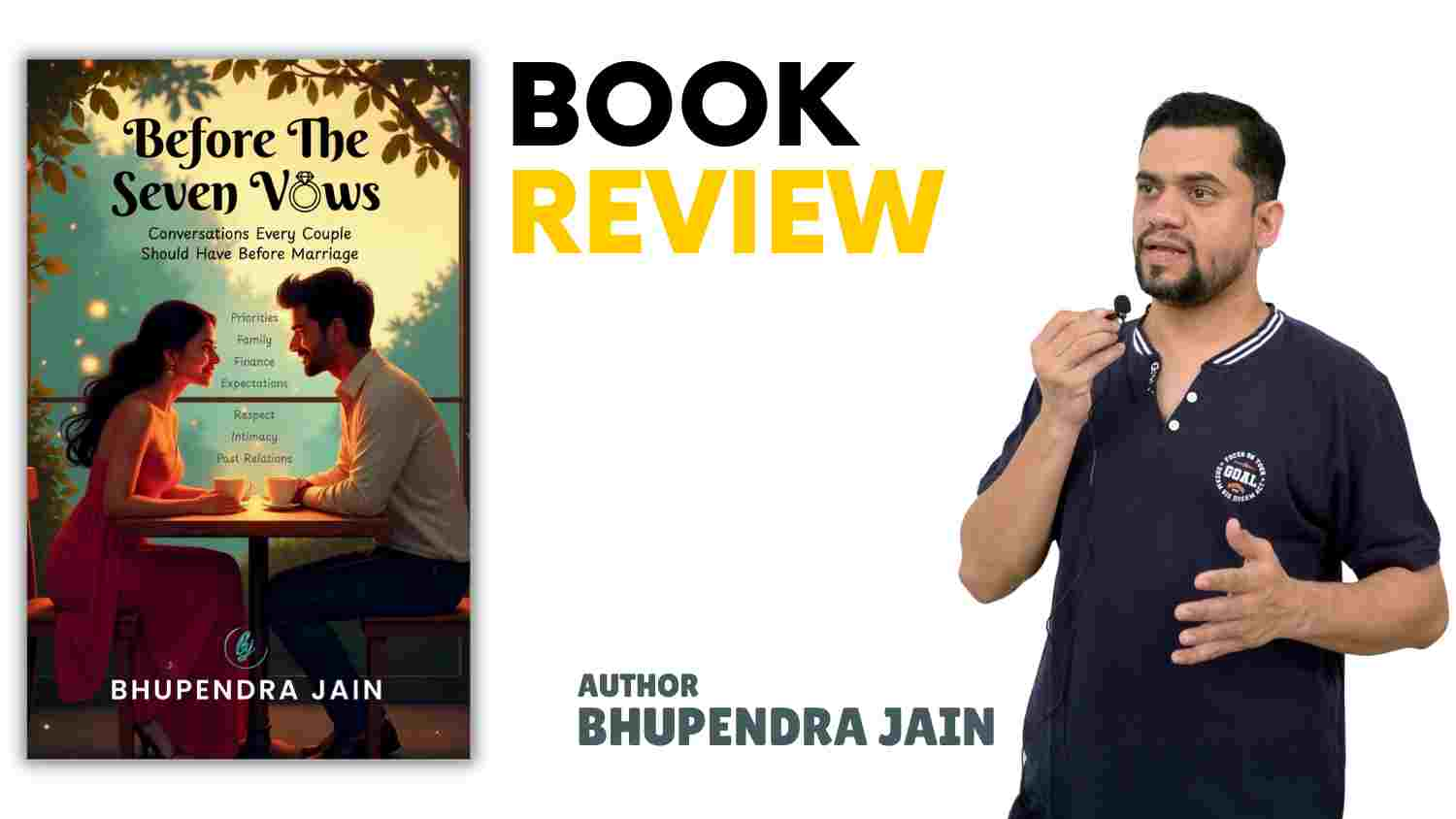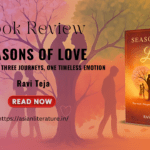
Before The Seven Vows
Book Title: Before The Seven Vows : Conversations Every Couple Should Have Before Marriage
Author: BHUPENDRA JAIN
ISBN: 9789363554986
Publisher: Evincepub Publishing
Introduction
Marriage has always held a special place in Indian culture. It is not only a union between two individuals but also a joining of families, traditions, values, and responsibilities. The decision of choosing a life partner is therefore considered one of the most important milestones of life. In his book Before The Seven Vows: Conversations Every Couple Should Have Before Marriage, author and counselor Bhupendra Jain attempts to guide young men, women, and their families through this complex decision-making process.
The book focuses not on promoting either love marriage or arranged marriage, but on teaching how to have meaningful conversations and clear thinking before entering into this lifelong commitment. With his experience as a psychologist and marriage counselor, Jain provides practical tools, simple frameworks, and real-life examples that help couples ask the right questions, set the right expectations, and avoid common mistakes.
Aim and Purpose to write this Book
The main aim of the book is to reduce the chances of marital unhappiness, misunderstandings, and broken relationships by preparing people to think clearly before marriage. According to Jain, many couples face difficulties not because they lack love, but because they never discussed important matters before marriage.
The purpose, therefore, is two-fold:
- To help individuals understand their own priorities, values, and goals.
- To create a structured method of communication between prospects and families so that compatibility is checked before final commitment.
The book positions itself as a supportive guide, not a prescriptive rulebook. The author repeatedly reminds readers that every individual and every family is unique, so readers must adapt the ideas according to their own situation.
Structure and Organization
The book is divided into four major parts, each serving a clear theoretical purpose:
- Part I: Factors That Determined Indian Marriages – This section highlights the historical and cultural shifts in Indian marriages. By comparing the past with the present, the author shows how social reforms, globalization, and education have changed marriage expectations.
- Part II: Common Mistakes Made by Prospects and Parents – This part discusses the errors often made by families and individuals in the process of selecting a life partner, such as unclear priorities, family pressure, and lack of communication.
- Part III: Psychological Methods, Rules, and Tools – This is a theoretical framework section where the author introduces his concepts like the 3F’s and 2P’s Rule (Family, Finance, Future + Personality, Past) and the R2FCD Principle (Relationship, Responsibility, Family, Communication, Decision).
- Part IV: Preparing for Marital Meetings – This section offers practical steps for applying the earlier theories. It explains how to prepare questions, how to start conversations, and how to manage time during meetings with prospects.
This structure makes the book easy to follow, moving from background theory to practical application.
Theoretical Foundations
1. Marriage as Communication
One of the strongest theoretical foundations of this book is the idea that marriage is a process of communication. The author highlights that communication gaps between partners, and between parents and children, are the main reasons behind marital conflicts. From a psychological point of view, clear communication reduces misunderstandings and sets realistic expectations.
2. Priorities and Decision-Making
Another theoretical base is the role of priorities in decision-making. Jain argues that without knowing one’s priorities—such as career, family, children, religion, or finances—people often make impulsive or pressured decisions. The book therefore provides exercises to help readers identify and arrange their priorities before meeting a potential partner.
3. Compatibility Beyond Love
The author also stresses the theoretical point that love alone is not enough. While love is important, practical matters such as financial stability, family background, and personal values also play a large role in long-term happiness. This reflects the psychological theory that successful marriages require both emotional and rational compatibility.
Concepts Introduced in This Book
The 3F’s and 2P’s Rule
This simple model suggests that couples should discuss five broad areas:
- Family
- Finance
- Future
- Personality
- Past
By addressing these systematically, one can understand not just the surface-level interests of a prospect but also deeper aspects of their lifestyle and values.
The R2FCD Principle
This principle stands for: Relationship, Responsibility, Family, Communication, and Decision. It is designed as a mental framework to remind individuals of the core areas that should guide their marriage decisions.
Question Categorization
The book divides questions into categories such as “must ask,” “good to ask,” and “ask if time permits.” This categorization is theoretically valuable because it helps individuals prioritize discussion topics during limited time, especially in arranged marriage meetings.
Practical Guidance
One of the strongest aspects of this book is how it translates theory into practical guidance. Jain explains how to:
- Break the ice in the first meeting.
- Listen carefully and with patience.
- Ask sensitive questions without creating discomfort.
- Balance respect for family traditions with personal preferences.
- Avoid unnecessary conversations that waste time or create conflict.
He even suggests exercises where readers can write down their priorities and questions, making the book interactive.
Critical Analysis
Strengths
- Clarity and Simplicity – The book is written in simple, everyday English, making it accessible for a wide audience.
- Balanced Perspective – Unlike many other works, it does not promote one type of marriage over the other. Instead, it stresses compatibility and preparation.
- Cultural Relevance – The examples are drawn from Indian contexts, making the book relatable to Indian readers.
- Psychological Insights – The frameworks like 3F’s and R2FCD are easy to remember and apply.
- Universal Audience – The book addresses not only marriage candidates but also parents, siblings, and relatives who are part of the decision-making process.
Limitations
- Repetitiveness – At some points, the advice feels repetitive, especially where similar warnings are repeated in different chapters.
- Generalization – While the book acknowledges diversity, some examples are generalized and may not apply equally to all communities or individuals.
- Focus on Heteronormative Marriages – The book is mainly written for traditional heterosexual marriages, and may not fully address modern variations such as intercultural or same-sex marriages.
Relevance in Contemporary Society
The book is especially relevant for today’s Indian society where traditional values coexist with modern aspirations. Many young people face confusion between career and marriage, personal choice and family expectations, or love and social pressure. Divorce rates are rising, and many couples are unhappy due to lack of prior discussions.
In this context, Jain’s book provides a roadmap for responsible decision-making. It is not just about avoiding divorce but also about building strong, respectful, and lasting relationships.
Conclusion
Before The Seven Vows is a thoughtful and practical book that combines psychology, cultural understanding, and real-life counseling experience. Its theoretical frameworks such as the 3F’s and 2P’s Rule and R2FCD Principle offer easy-to-use tools, while its practical advice on communication and questioning helps readers apply these ideas in real situations.
The book does not claim to give ready-made answers, but it equips readers with the ability to ask the right questions and think deeply before making the most important decision of their life. For young people preparing for marriage, for parents trying to support their children, and for families navigating modern challenges, this book is a valuable guide.
In simple words, this book teaches that marriage should not begin with blind hope but with open communication, mutual respect, and conscious choice.

